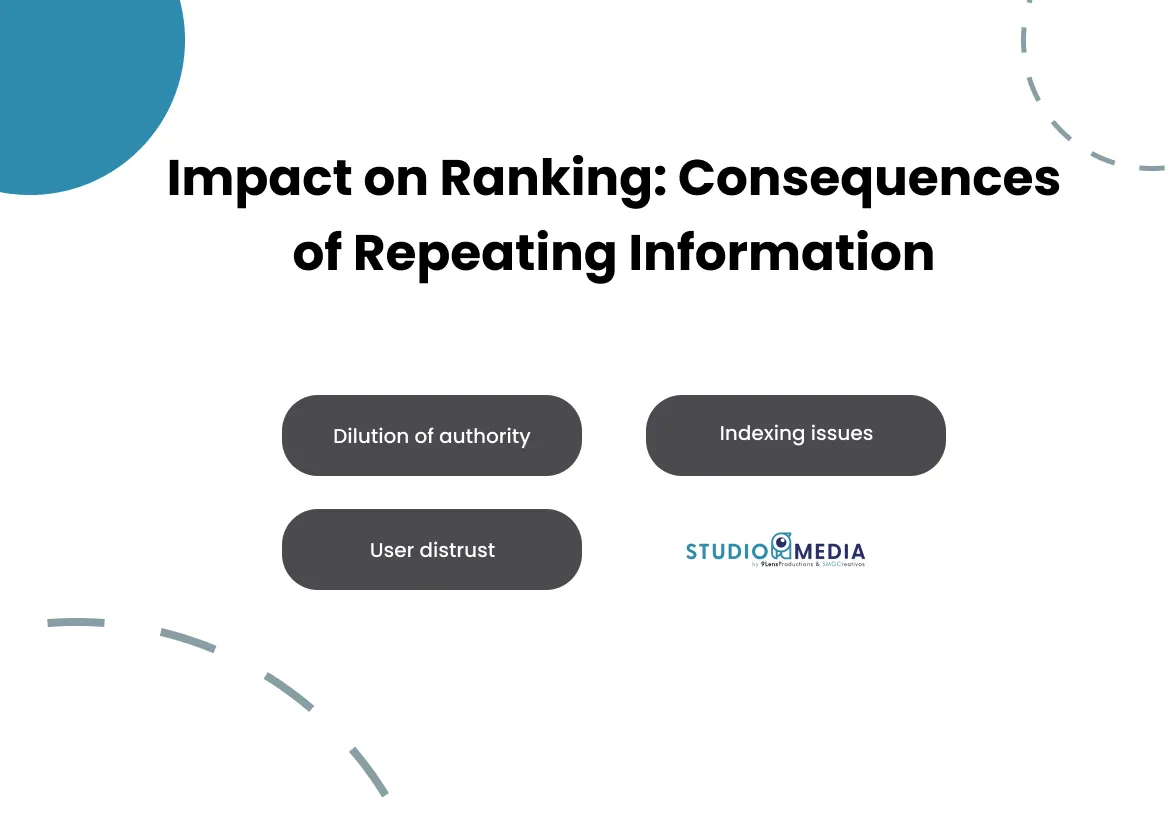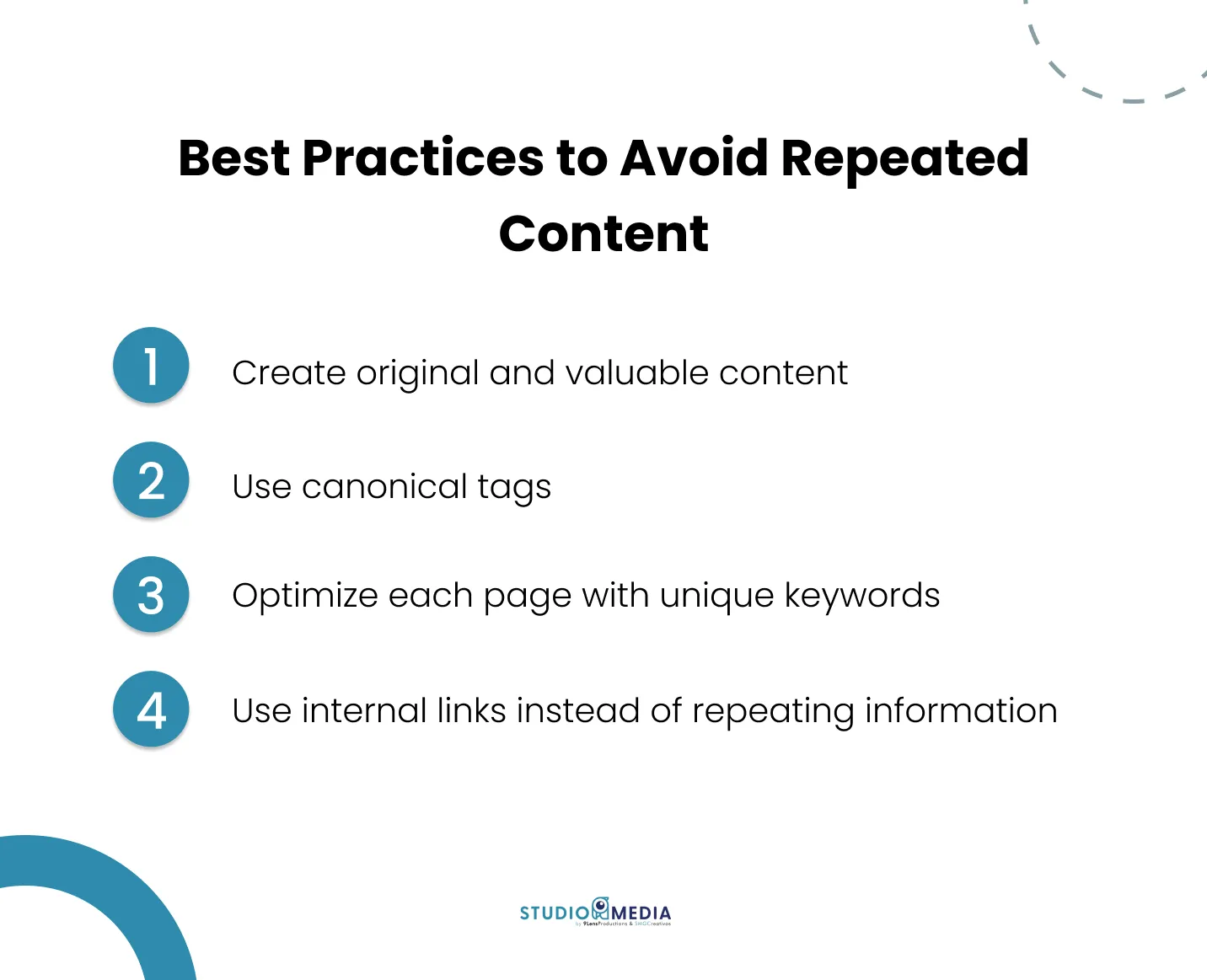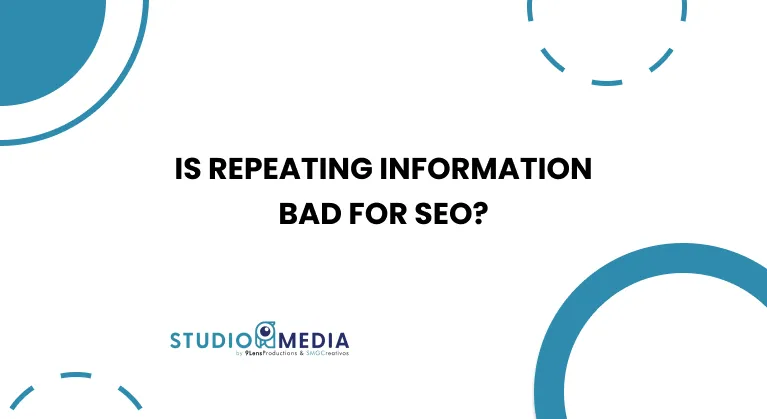Repeating information on a website is a recurring topic among SEO specialists. Some believe that repeating content can negatively affect search engine rankings, while others think it’s not always harmful. The truth is that, like many aspects of SEO, it depends on the context and how the repetition is managed. In this article, we’ll explore how search engines handle repeated content, the potential consequences, and when it might be tolerable or even beneficial.
What Is Duplicate Content? An Overview
Before diving into the consequences of repeated content, it’s important to understand what duplicate content is. In simple terms, duplicate content refers to blocks of text that appear on multiple web pages, whether on the same domain or across different domains. Search engines, like Google, prioritize offering users relevant and unique content. If they find the same information on several pages, they may struggle to decide which one is the most relevant for users.
Duplicate content can be categorized into two types:
- Internal duplicate content: Occurs when multiple pages within the same website contain the same or very similar content.
- External duplicate content: Happens when one page on a website has content that is identical or very similar to a page on another website.
How Repeated Content Affects Search Engines?
Google and other search engines prioritize user experience. If a user encounters the same content on multiple pages, this can lead to distrust or lack of interest. To avoid this situation, Google selects a single version of the repeated content to display in search results. If the repeated content is unnecessary and doesn’t add value, Google may reduce the visibility of those pages.
While duplicate content doesn’t usually result in a direct penalty from Google, it can still affect SEO performance. Instead of penalizing the site, Google filters out the duplicated versions and selects the one it deems most relevant, leaving the rest with less chance of ranking in top positions.
Impact on Ranking: Consequences of Repeating Information
Repeated content can negatively impact page rankings for several reasons:
- Dilution of authority: If you have multiple pages with similar content, they will all compete for the same keywords, potentially splitting the authority of inbound links and negatively affecting your overall search rankings.
- Indexing issues: Google might struggle to decide which page to index and display in search results if many pages contain the same or very similar information.
- User distrust: When users find repeated information across different pages of the same website, it can give the impression that there isn’t enough original or relevant content. This can increase bounce rates, indirectly affecting the site’s SEO performance.

When Repetition Isn’t So Bad for SEO?
Not all repeated information is harmful. There are cases where repeating certain data or concepts is inevitable or even necessary. A good example is educational or technical content, where the same definitions or explanations are repeated across different pages, but each page tackles different aspects of the same topic.
In some cases, repeated content can be helpful if it allows search engines to better understand the structure of your site and its relevance to users. However, it’s essential that each page adds some additional value or focuses on a unique aspect so it isn’t merely seen as a copy of another page.
The Difference Between Repeated Content and Cannibalized Content
Although repeated content and keyword cannibalization are related, they are not the same. Cannibalization occurs when multiple pages on a website try to rank for the same keyword. This creates competition among your own pages and can reduce the overall impact of your SEO strategy.
On the other hand, duplicate content can occur even when the target keywords are different, but the text on the pages is too similar. Both situations need to be handled carefully, as they can affect your site’s ability to rank effectively for relevant searches.
How Google Identifies and Penalizes Duplicate Content
Google uses several mechanisms to identify duplicate content, such as analyzing the HTML structure and comparing text across multiple pages. Although Google doesn’t automatically penalize sites with duplicate content, it may choose to ignore the duplicated pages in its index or rank only the version it considers most relevant.
In cases where a website abuses duplicate content to manipulate search results (e.g., by creating multiple landing pages with the same content), Google may apply manual penalties. This usually happens when duplicate content is perceived as an attempt at spam or over-optimization.
Additionally, Google encourages the use of canonical tags to indicate which version of a page is the primary one when there are multiple versions with similar content. By using these tags, you can avoid duplication problems and help Google correctly rank your site’s pages.
Best Practices to Avoid Repeated Content
To avoid issues related to repeated or duplicate content, it’s crucial to follow some SEO best practices:
- Create original and valuable content: Each page on your website should offer unique and relevant information to users. Ensure that each piece of content addresses a different aspect of the topic or dives deeper into a distinct angle.
- Use canonical tags: If you need to repeat content, use a canonical tag to indicate which version is the «official» or primary page. This will tell Google which version to index and prevent duplicate content from affecting your ranking.
- Optimize each page with unique keywords: Make sure that each page is optimized for different keywords. This not only avoids cannibalization but also increases the chances that different pages will rank for various searches.
- Use internal links instead of repeating information: Instead of repeating the same information on multiple pages, use internal links to direct users to the relevant sections of your site that already cover the topic.

Alternatives to Repeated Content: Value-Adding Strategies
When looking for alternatives to repeated content, one of the best strategies is to explore related topics in greater depth. Instead of rehashing the same information, you can delve into specific subtopics or angles of the original theme. For instance, if you’ve already written a comprehensive guide on a subject, consider creating follow-up pieces that focus on advanced techniques, case studies, or niche areas of interest within that topic. This approach not only prevents repetition but also allows you to provide a more comprehensive resource for your audience.
Another effective alternative is to present your content in different formats. Not all users prefer consuming information in the same way, and diversifying your content types can attract a broader audience. Instead of writing multiple blog posts on the same subject, you can create videos, infographics, podcasts, or slide decks. These formats allow you to present similar information but in a more engaging and visually appealing way, ensuring that users who prefer different types of media can still benefit from your expertise.
Updating existing content
It is another valuable strategy for avoiding duplication. Rather than creating a new article that covers the same ground as a previous one, consider revisiting and enhancing the original content. This could involve adding new statistics, case studies, or insights that have emerged since the original publication. By refreshing old content, you maintain its relevance while avoiding the pitfalls of repetition, and it can also give a boost to your SEO, as search engines favor up-to-date and accurate information.
Internal linking
It is an underrated strategy that can add value without the need to repeat content. Instead of duplicating information across multiple pages, use internal links to guide readers to the pages where the information is already covered in depth. This not only helps with SEO by creating a clear site structure, but also enhances the user experience by directing them to the most relevant and comprehensive resources available on your site.
Finally, consider focusing on user-generated content or expert contributions as an alternative to repeating the same ideas. Inviting guest writers, conducting interviews, or sourcing testimonials can introduce new perspectives to your site without duplicating your own content. This adds credibility and diversity to your content, offering unique insights that resonate with different segments of your audience and positioning your site as a dynamic source of valuable information.
The Role of Canonical Tags for Duplicate Content
Canonical tags are a key tool in SEO for handling duplicate content. These tags allow webmasters to indicate to Google which version of a page is the primary one when there are multiple versions with similar or identical content. By using canonical tags, you can avoid having Google see the content as duplicated and reduce the risk of multiple versions of the same page competing with each other in search results.
For example, if you have a product page that appears across multiple URLs due to tracking parameters or filters, you can use a canonical tag to indicate to Google which version of the page is preferred.
The Key Is Balance
Repeating information on a website isn’t always bad, but it must be managed carefully. Duplicate content can negatively affect SEO performance if not handled properly, but with the right strategies, it’s possible to avoid these issues and maintain strong rankings. The key is to offer unique, relevant, and valuable content on each page, ensuring that search engines recognize and reward the effort to provide value to users.







